Field trips are an essential part of our homeschool experience, enriching our educational journey in memorable ways. Field trips offer the perfect opportunity for seasonal learning, allowing us to connect the changing world around us. By venturing beyond the four walls of our home, we can bring history to life, transform abstract concepts into tangible experiences, and foster a deeper understanding of academics. Field trips also encourage our children to pursue their individual interests. I find so much joy in curating our field trips to what is exciting them in different seasons. These hands-on experiences inspire curiosity and creativity, making learning not just informative, but also fun and memorable. In every excursion, we find the chance to bond as a family while cultivating a love for learning and discovery.
This blog post explores the benefits of field trip, best tips for planning field trips, and my favorite field trip ideas for homeschool families.
In this blog post:
- Benefits of field trips for homeschooled students
- How we do field trips in my homeschool
- Using field trips as an opportunity for notebooking
- Best tips for planning field trips
- Favorite homeschool field trip ideas
Benefits of field trips for homeschooled students
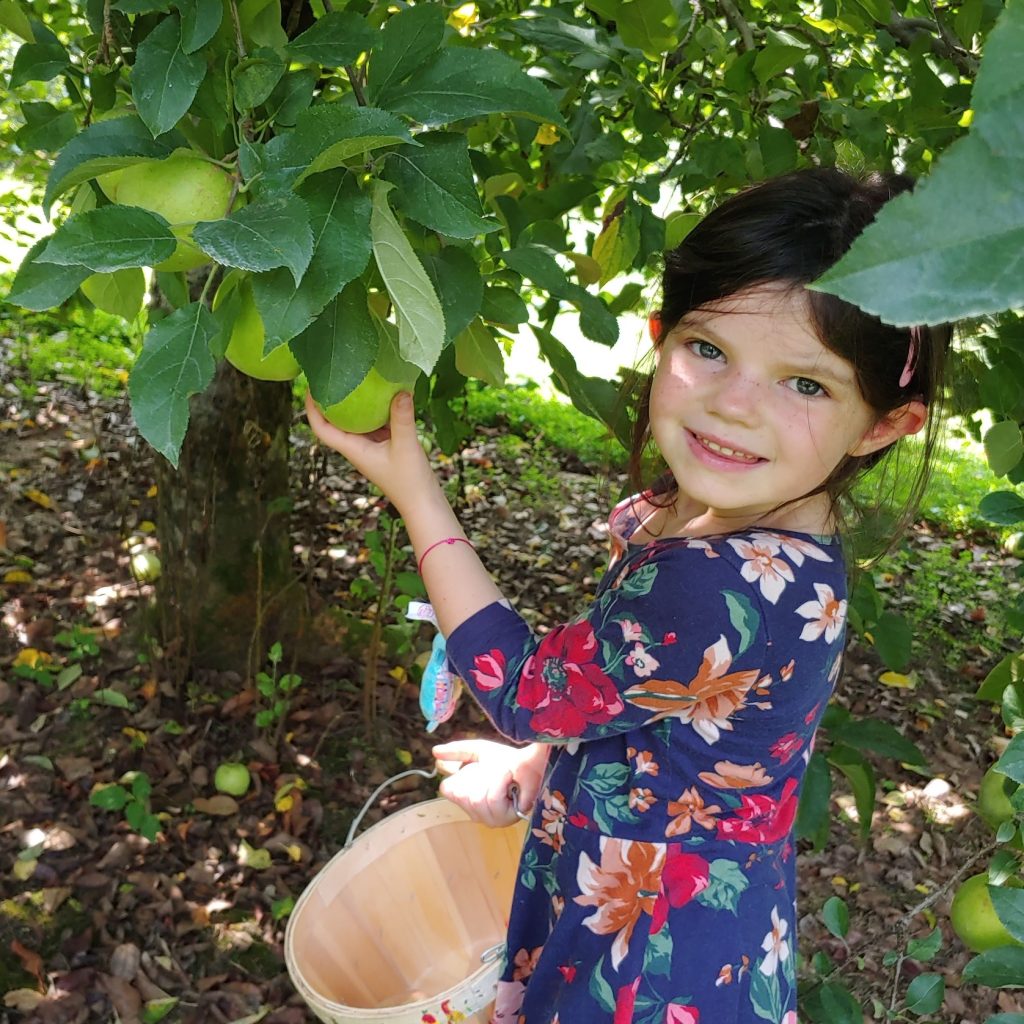
Field trips provide invaluable learning experiences for homeschool families by bringing academic subjects to life. Field trips offer hands-on opportunities for learning and allow children to learn about subjects in a new way. Visiting museums, historical landmarks, science centers, and nature reserves allows kids to witness concepts in action, making lessons more tangible and memorable. Field trips help homeschoolers gain deeper understanding through direct interaction with their environment.
Field trips are also a great opportunity for socialization. Field trips provide a chance to connect with others, either through a group setting with peers or by learning from experts. Group outings with fellow homeschoolers encourage teamwork, communication, and collaboration. Interacting with experts, tour guides, and other students fosters confidence and improves social skills. These experiences help homeschoolers develop friendships and learn how to navigate different social situations.
Taking field trips nurtures curiosity and critical thinking skills. When children visit new places, they are encouraged to ask questions, make observations, and think critically about what they see. Engaging with historical artifacts, conducting science experiments, or analyzing works of art in person encourages independent thinking. These real-world experiences help students develop problem-solving skills, adaptability, and a lifelong love for learning that goes beyond traditional academic exercises.
Field trips are also a great opportunity for kids to dive deep into their personal interests by learning more about a subject they are passionate about. It is also an opportunity to participate in the season’s offerings, like visiting a fall pumpkin patch or a spring festival.
Finally, field trips provide a refreshing change of pace from home-based learning. Homeschooling offers flexibility, and field trips make excellent use of this by breaking up routine lessons with exciting, immersive experiences. Being outdoors or in a new environment stimulates creativity and motivation, making learning more enjoyable. Whether a short visit to a local farm or an extended trip to a national park, field trips inspire children to see the world as their classroom, making their education meaningful and tangible.
How we do field trips in my homeschool
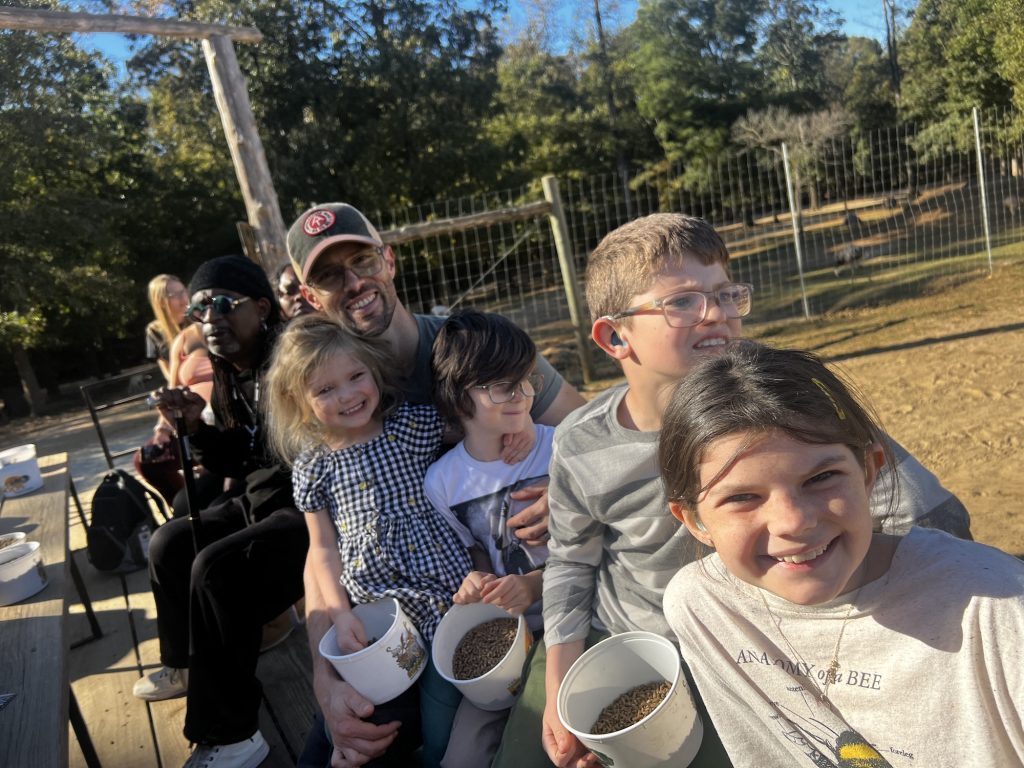
In our homeschool, field trips are a blend of planned adventures and spontaneous explorations that enrich our learning. I make it a priority to align specific trips with our nature, geography, or history lessons, ensuring that our outings deepen our understanding of what we’re studying.
Before each trip, we typically cover relevant lessons to set the stage, and afterward, we dive into notebooking our experiences, which really helps solidify the new knowledge. I also keep our schedule flexible, leaving room for impromptu trips that arise from our homeschool community or spark my children’s curiosity. I love thinking outside the box — not just sticking to traditional museums and science centers, but also planning unique excursions. For example, we might visit a chocolate factory after reading Charlie and the Chocolate Factory, or volunteer at a nursing home after discussing compassion and empathy.
Using field trips as an opportunity for notebooking
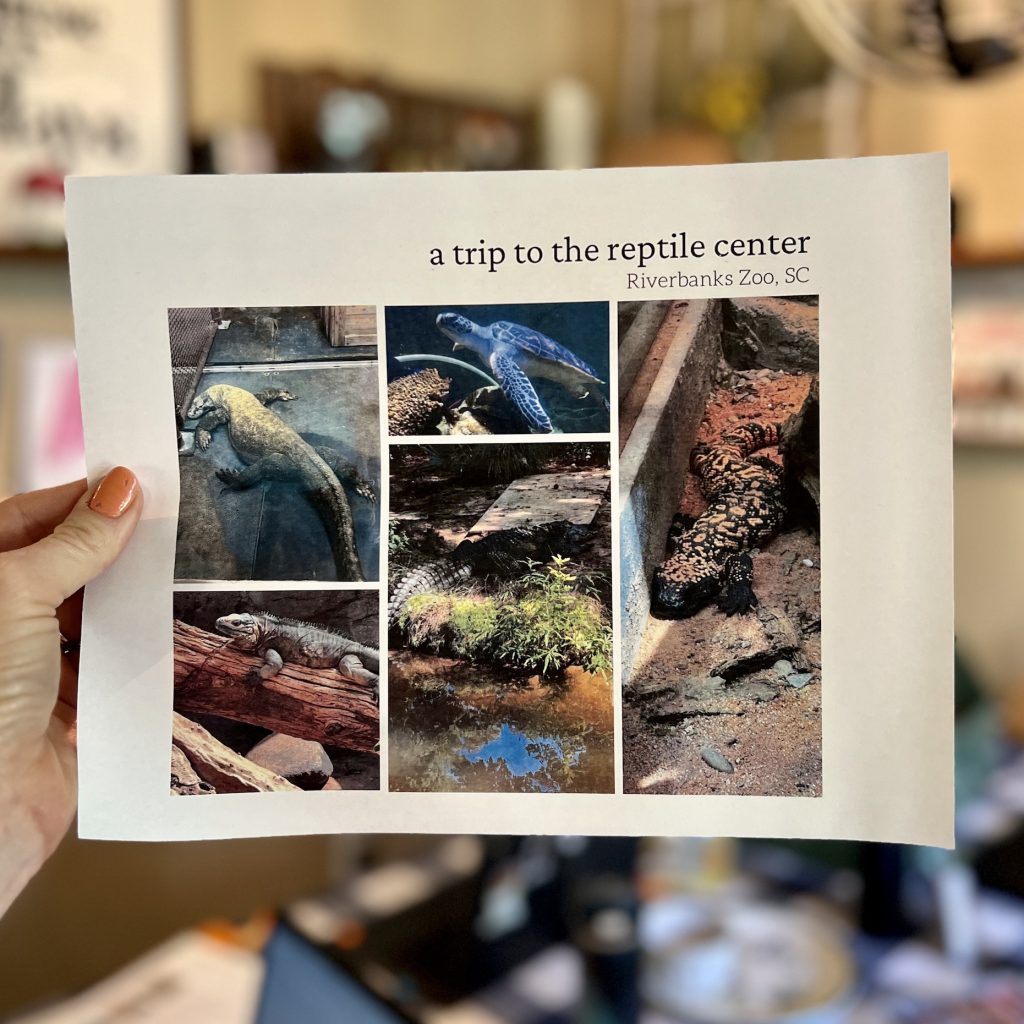
Over the years, we have used our field trips as inspiration for notebooking. After taking a trip or visiting a museum, we spend time reflecting on the experience, whether we are writing down favorite memories, drawing pictures of what we saw, or learning more facts about a subject. Sometimes they take their own photos and put them together in a collage to document the excursion. As my children put together pages in their notebook, I love seeing what stood out to them, what they found interesting, or how they understood it from their perspective.
Best tips for planning field trips
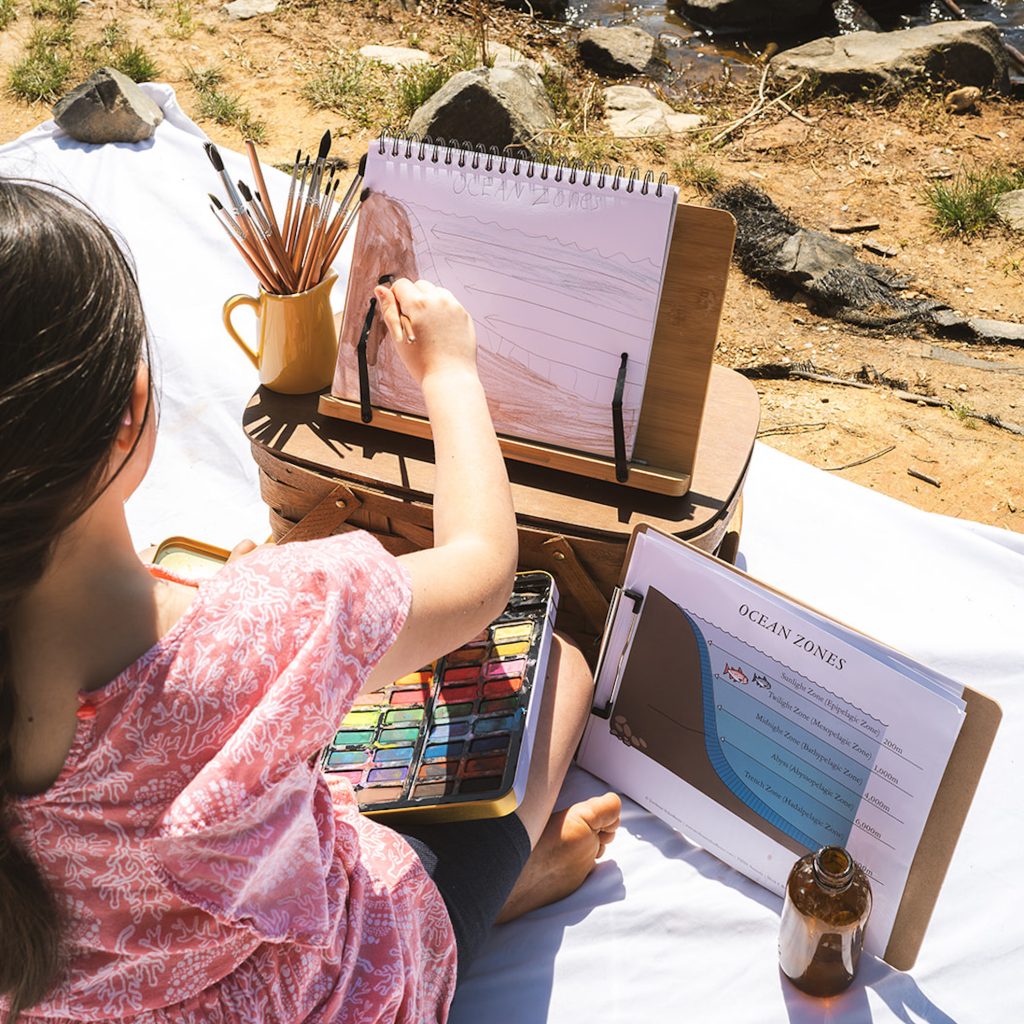
Here are some tips to make sure your experience is enjoyable, fulfilling, and worth the effort you put into it. Here are some ways to help make the most of your outings:
- Choose engaging locations – Select destinations that align with your curriculum and your child’s interests. Museums, science centers, historical sites, nature preserves, and local businesses can all provide valuable learning opportunities. Consider hands-on experiences like workshops, guided tours, or interactive exhibits to enhance engagement.
- Plan and schedule in advance – Make a list in your homeschool planner and look over the next few months to see when you can make time to go. Research the location’s hours, special events, and any homeschooling discounts they may offer. Some places require reservations, especially for group tours or educational programs. Planning ahead ensures you have access to the best experiences and avoids last-minute disappointments.
- Incorporate pre- and post-trip activities – To maximize learning, introduce key concepts before the trip through books, videos, or discussions. After the trip, reinforce what was learned with activities like notebooking, art projects, or presentations. This helps reinforce new knowledge and encourages reflection.
- Pack prepared – Bring necessary supplies such as notebooks, pencils, cameras, snacks, and weather-appropriate clothing.
- Encourage social interaction – Field trips are great opportunities for homeschoolers to connect with peers. Consider coordinating with grandparents, other homeschool families, or groups to enhance the experience. Social interactions during trips help children develop teamwork skills and make learning more fun and memorable.
Favorite homeschool field trip ideas
Here are 16 of my favorite field trip ideas for kids and families.
1. Museums
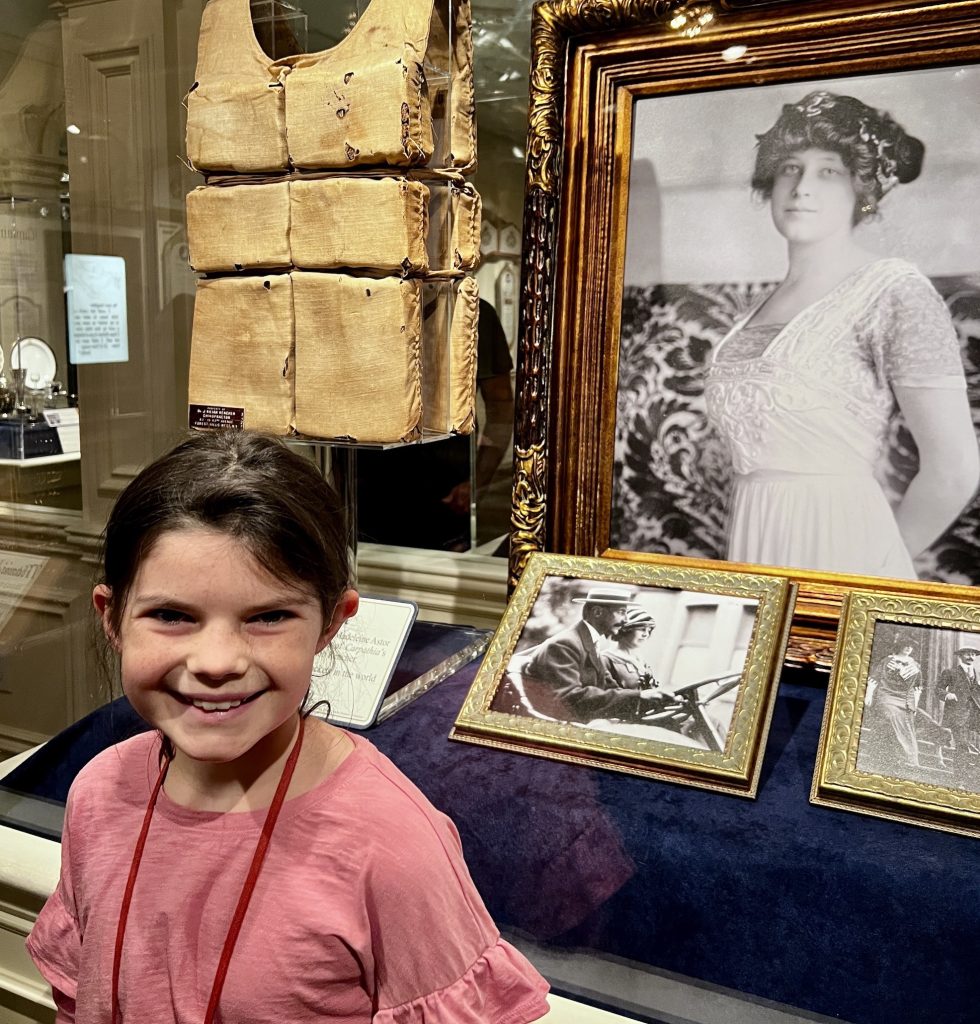
Art museums, science exhibitions, and history centers are easy field trips to add to your schedule. Plus, you can teach children about museum etiquette and what behavior is expected of them. Use art museums as an opportunity to practice art study skills like taking time observing artwork, playing Hide and Describe, or asking questions about art which is a practice throughout Rooted Family Bible Curriculum and Treehouse Nature Study.
2. Nature centers
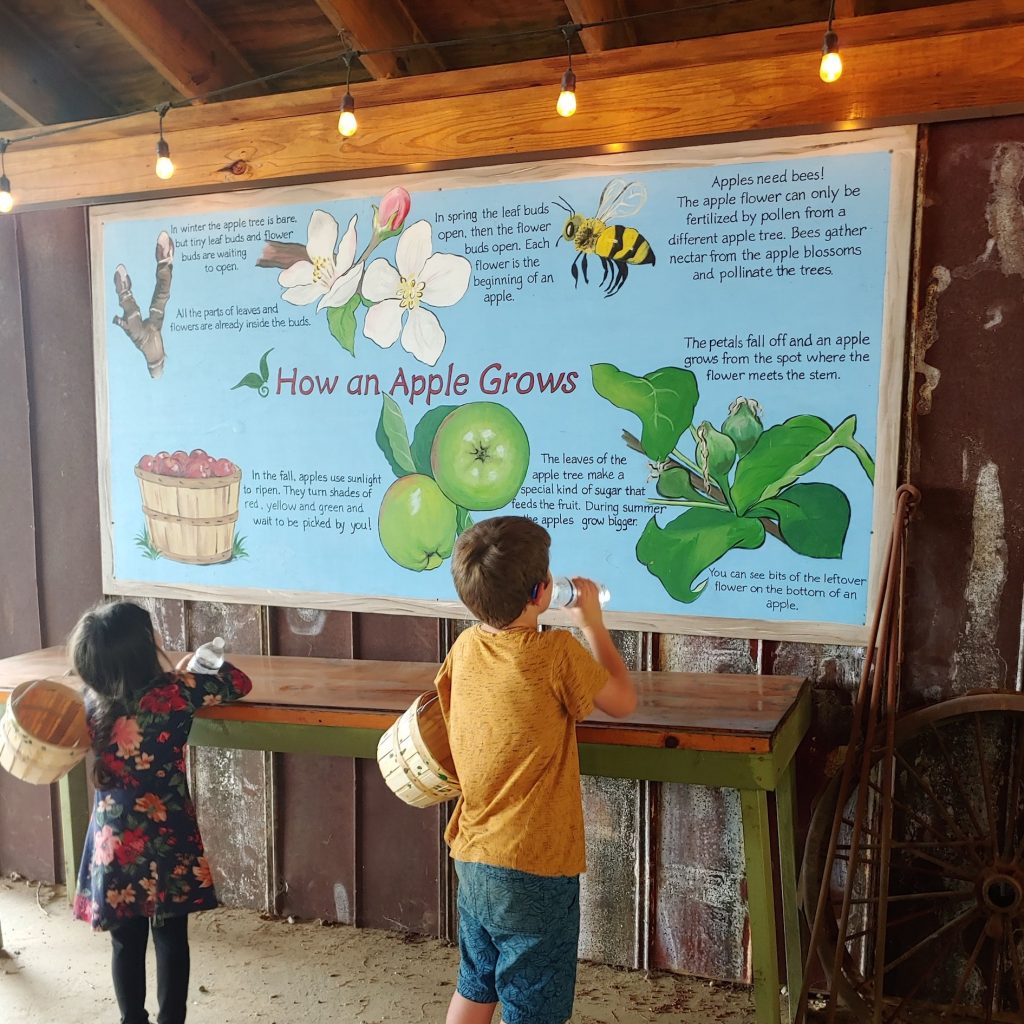
Check out nature preserves and botanical gardens in your area and highlight the different ecological environments present in your own community. These are great ways to learn about your local environment or the natural characteristics of a place you visit. Check the calendars because these often have special classes, learning opportunities, and events geared for children. Use these as a springboard to observe elements of nature in real life, or to go deeper on a seasonal topic in Treehouse Nature Study.
3. Gardens and orchards
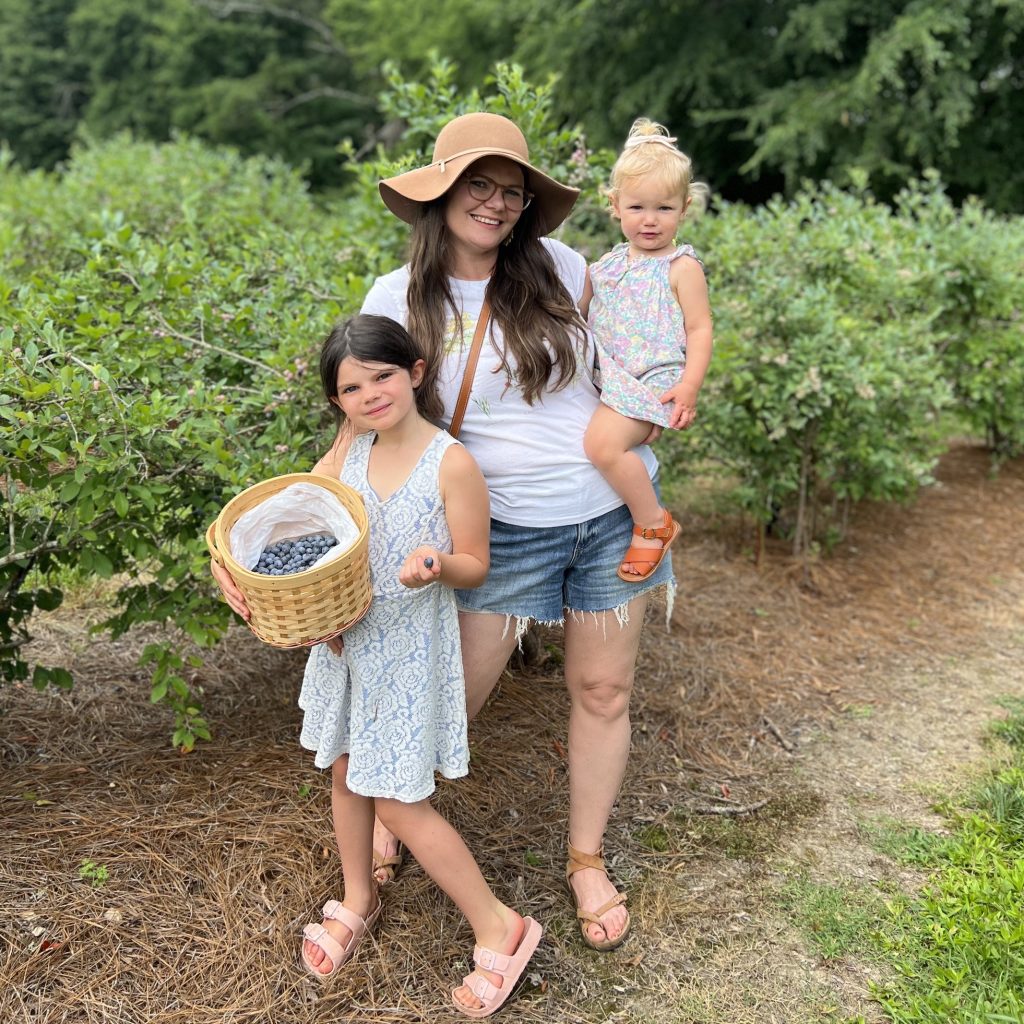
If you live near agricultural areas, orchards, gardens, and farms are seasonal choices for learning and making memories. Try picking apples, blueberries, peaches, strawberries, sunflowers, pumpkin patches and so much more! Try out the unique things your community has to offer. These are also good ways to make traditions you and your children will enjoy from year to year. Pair with a seasonal unit study from Treehouse Nature Study like apples, pumpkins, flowers, and berries.
4. Nature walks with a specific focus
Of course there are so many ways to enjoy getting out in nature, but a lot of learning can happen when you get into nature with a specific purpose. Try out a scavenger hunt from Treehouse Nature Study, Primary Years, or grab a chart to identify different types of trees in the forest from Treehouse Nature Study, Primary Years. You can also research birding trails in your region and try to identify birds at different parts of the year.
5. Bodies of water
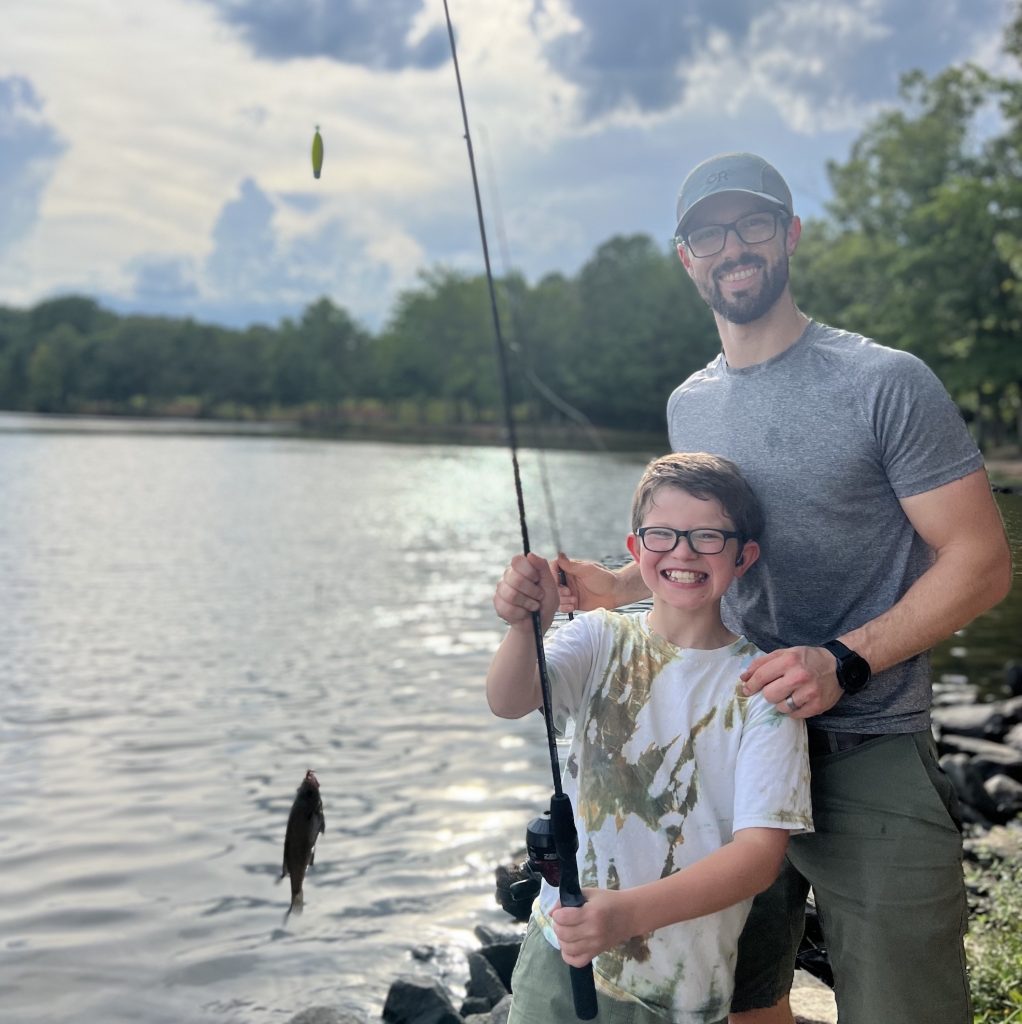
Do you live near a river, lake, or ocean? Bodies of water provide so many opportunities for taking learning out of a book and into real life. Study seashells from Treehouse Nature Study: Summer, Primary Years, learn about tadpoles and frogs with Pond Life week from Treehouse Nature Study: Spring, Primary Years, or even take your learning deeper and take a sample of water home and study it under a microscope with this activity from Treehouse Nature Study: Spring, Intermediate Years.
6. Zoos, reptile centers, aquariums, and bird sanctuaries
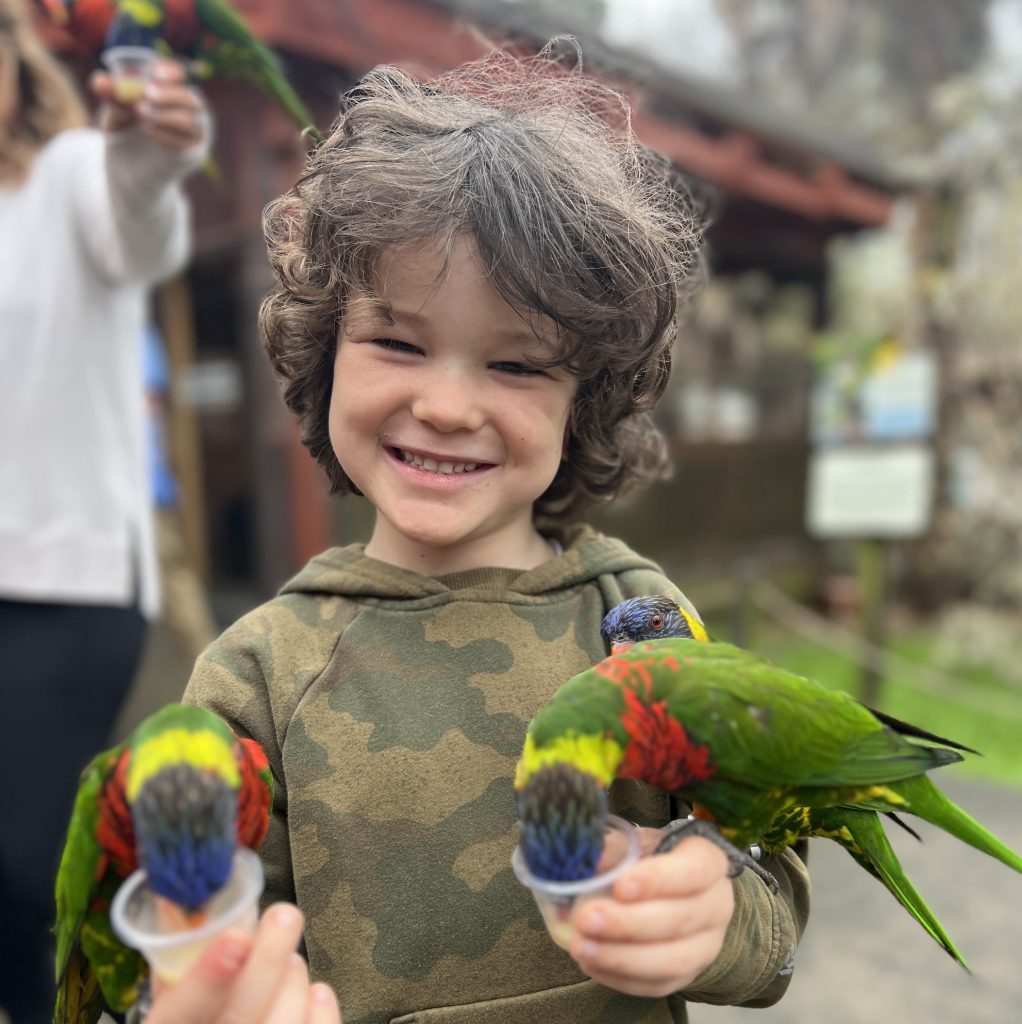
Get up close and personal with animals by visiting animal centers. Zoos and aquariums are easy places to visit to learn about animals, watch their movements and behaviors, and learn about their natural environment. You can also check out reptile centers and bird sanctuaries to learn about people who help animals in the local environment. Pair this with a unit study like bird week from Treehouse Nature Study: Spring, Primary Years or themes like marine mammals and sharks and fish week from Treehouse Nature Study: Summer, Primary Years to take the learning deeper.
7. Historical sites
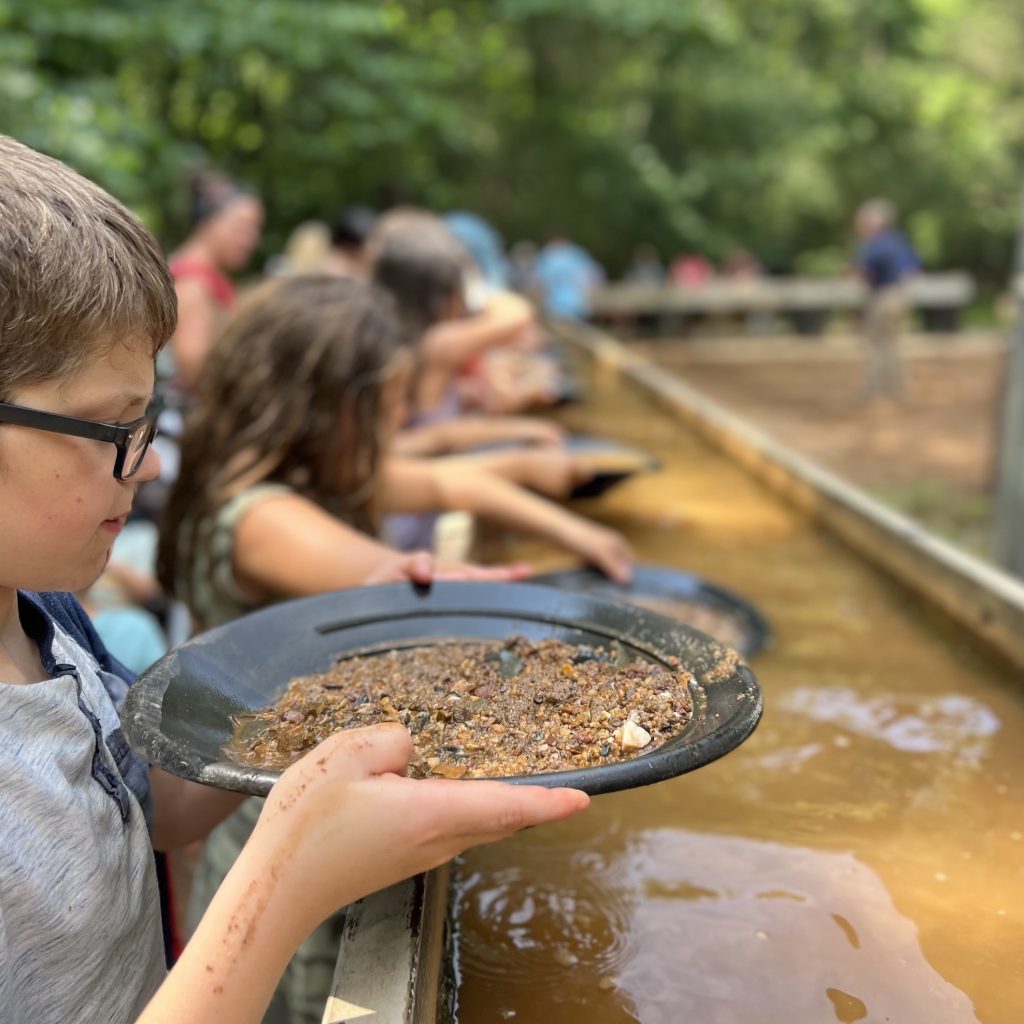
Bring history to life by visiting historical replicas in your community, or by seeking out historical sites that interest your children. It may take some research, but you can find historical sites such as historic homes, battlefields, and historical re-enactments all over. Get a firsthand look at home people lived decades or centuries ago, and understand what has and hasn’t changed over time.
8. Memorials
Help children understand history and pay respect by visiting memorials. Consider visiting memorials for war veterans or difficult events, and teach children about civic duty, empathy, gratitude, and respect.
9. Community service
Field trips are often learning-focused, but consider adding in a field trip where children can participate and give back to the community. Look for a nature clean-up event, visit the elderly in a nursing home, volunteer to read to younger children at a library, or volunteer in a community garden. With a little creativity, you can find opportunities to serve and impact the lives of others.
10. Cultural festivals
Explore other cultures and their unique traditions by attending a cultural festival in your community. Try new food, see performances, listen to presentations, and dive deep into learning about other cultures. This can be a great supplement to a geography lesson, history lesson, or holiday study like A Connected Christmas: Around the World.
11. Civic offices
Visit your state capitol building, local courthouse, police department, or fire station and learn about the different roles in your community.
12. Career-focused field trips
Encourage your children to think about career choices by visiting different work settings. Inquire with different professionals to see if children can observe different roles at work like doctors, dentists, teachers, builders, designers, engineers, and more. Check out your local library to see if there are any events that introduce children to different types of careers.
13. Children’s theater, ballet, or symphony
Check out local performing arts opportunities like children’s theater, ballet, broadway musicals, dance festivals, or orchestras. There are often so many levels of this that make it attainable for different budgets, schedules, and types of performances. Look over the calendar to see what events may be free for your community to give your children a sampling of the arts.
14. Fun field trips
Plan special outings as rewards for completing a math level or another learning milestone. Visit a bowling alley, skating rink, or live sporting event and enjoy a day together. Consider options of sporting events like college sporting events or minor league teams that may be easier to attend.
15. Art or pottery studio
Let children try their hand at creating art like making pottery, painting pottery, or trying a new medium of painting. Doing this out of the house can make it a fun experience without needing to purchase new supplies or clean up messes.
16. National Parks
Check off a visit to your nearest national park to see wildlife in action. Look for Junior Ranger Programs to do fun activities and earn patches and certificates.
Do you do field trips in your homeschool? Share your favorites in the comments below.



![Why Kids Should Still Read Fairy Tales Today [Free Booklist]](https://storage.googleapis.com/treehouse-schoolhouse-media-dev/8901dcb1-img_6905.jpg)